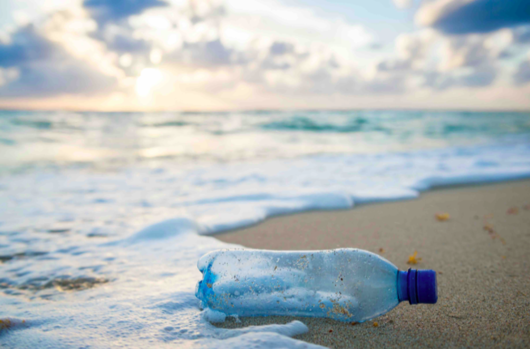
Packaging – what’s it made out of, does it contain plastic, can it be recycled and what carbon footprint will it leave on the planet? These are questions that every exhibitor is likely to face from retail buyers when Glee opens its doors at Birmingham’s NEC tomorrow and with good reason.
Cutting down on single-use plastic is at the top of the public agenda, and buyers know that truly green products that leave a minimal environmental footprint will fly off the shelves.
Here, we ask Deco-Pak Marketing Director, Craig Hall, how the family-run garden landscaping and decorative aggregates specialist is leading the way in reducing its footprint, and contributing to projects that will leave our planet with a brighter future for the next generation.
What is Deco-Pak’s policy on cutting waste?
Deco-Pak is 100% focused on reducing its environmental impact, reusing materials where possible, and ensuring that any waste is recycled. All our packaging is 100% recyclable, however, this is only the beginning and we have ambitious plans to make our operations even greener – read on!
How is Deco-Pak reducing plastic in packaging?
Our policy is reduce, reuse and recycle, with single-use plastics at the top of the agenda. One option is to reduce the thickness of plastic that we put into bags without sacrificing the bag’s integrity and purpose. Deco-Pak is currently trialling recycled plastic, made from repurposed consumer waste, into our bags. There is still a long way for the technology to come up to speed. Working with GIMA, we are investigating ways in which consumers and retail partners can close the recycling loop. GIMA will be participating in a panel discussion at GLEE on ‘Reducing plastic use: the industry’s perspective’, taking place on 11th September.
The industry is abuzz with plastic alternatives. Why isn’t Deco-Pak switching to similar packaging?
It’s great to see so many suppliers looking at alternatives, however our research has shown that alternatives aren’t as green as we had first hoped. On first inspection, plastic alternative packaging appears to be a great idea, but drill down deeper and the reality is quite a different picture. Further factors need to be considered such as additional emissions of carbon dioxide in the production of such products, is the packaging fit for retail and consumer purpose, and how realistic logistically is it for recycling without contamination, or for composting domestically? For these reasons, we have decided to pursue other solutions.
Deco-Pak is becoming ‘plastic-neutral’. What does this mean?
Sir David Attenborough’s Blue Planet TV series left a global audience horrified at the devastating effect that ocean plastic waste is having on marine wildlife and the environment. We can all play a role in helping to clean the world’s oceans, and that’s why Deco-Pak is pledging to back schemes that remove plastics from the ocean, with the target of becoming plastic neutral – similar to being carbon neutral, where businesses offset their carbon footprint. This involves donating to charity partners, economic development firms that empower disenfranchised communities to collect and exchange any type of plastic for currency. This scheme makes a real difference, as ocean plastic is collected and exchanged for cash, as well as healthcare coverage, school tuition and much more.
What is Deco-Pak’s target for eliminating single-use plastics?
While all our packaging is recyclable, Deco-Pak intends to ultimately eliminate single-use plastics by closing the loop. We are currently researching ways to further reduce virgin plastic in packaging, however in the near future we intend to further highlight the way in which plastics can be recycled by consumers and retailers alike. Furthermore, all staff will become plastic-neutral, offsetting their estimated plastic waste.
Please visit Deco-Pak on stand Y40-Z41 in Hall 20 at Glee to find out more. Not only will our shirts be made from recycled plastics, but we’ll have genuinely innovative new ranges, including our exciting new Eco Stone collection of recycled decorative aggregates.